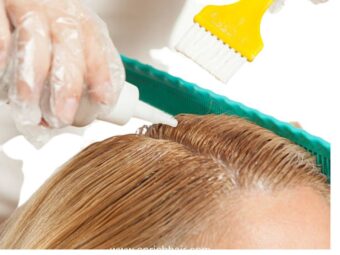How Long To Leave Splat Bleach In Hair
Table of Contents
Bleaching hair has become a transformative trend, allowing individuals to experiment with a spectrum of vibrant hues and bold shades. Whether you’re seeking a dramatic makeover or a subtle change, understanding the nuances of bleaching is crucial to achieving the desired results while maintaining the health of your hair. One fundamental question that arises when embarking on a bleaching journey is: “How long to leave Splat Bleach in your hair?” In this guide, we delve into the intricacies of bleaching, focusing on the specific case of Splat Bleach, and unravel the mysteries surrounding the optimal processing time for this product. By the end, you’ll be equipped with the knowledge needed to achieve stunning hair transformations while ensuring the safety and vitality of your locks.
Understanding Different Bleaching Products

Bleaching products have revolutionized the way we can transform our hair, offering an array of options to achieve various levels of lighting and color change. From traditional powders to modern creams, the world of hair bleaching is diverse and dynamic. In this section, we’ll explore the spectrum of bleaching products available and delve into their unique properties, applications, and considerations. By gaining a comprehensive understanding of these products, you’ll be better equipped to make informed choices when it comes to achieving your desired hair transformation.
How Long to Leave Splat Bleach in Hair?

The duration for which Splat Bleach should be left in your hair is a critical factor that significantly influences the outcome of your bleaching endeavor. The optimal processing time varies based on multiple factors that determine the lighting effectiveness and the overall health of your hair. In this section, we’ll explore the recommended time frames for leaving Splat Bleach in hair and the key elements that impact this decision. By understanding these factors, you’ll be better equipped to achieve the desired level of lightening while ensuring the integrity of your hair.
Factors Affecting Bleach Processing Time

- Hair Type and Color: Different hair types and initial colors respond differently to bleach. Darker hair or hair with previous color treatments might require longer processing times to reach the desired lightness. Lighter hair shades may achieve the desired result more quickly.
- Bleach Strength and Volume: The strength of the bleach, often indicated by the developer volume (e.g., 20, 30, 40 volume), affects processing time. Higher volume developers typically lead to faster lightning but can also increase the risk of damage.
- Desired Lightness: The level of lightness you want to achieve plays a significant role. If you’re aiming for a subtle change, a shorter processing time might suffice. On the other hand, more dramatic transformations require longer processing.
- Hair Health and Condition: The overall health of your hair is crucial. If your hair is damaged or weakened, it’s advisable to shorten the processing time to minimize the risk of further harm.
- Manufacturer’s Recommendations: Always refer to the manufacturer’s guidelines for Splat Bleach. They often provide specific instructions regarding processing times based on their product’s formulation.
- Strand Test Results: Conducting a strand test before full application allows you to gauge how your hair responds to the bleach. This informs the ideal processing time for your hair.
- Room Temperature and Ambient Conditions: The environment in which you’re bleaching your hair can affect the speed of the chemical reaction. Warmer temperatures may expedite the process.
- Personal Sensitivity: Some individuals have more sensitive scalps or hair that processes quickly. Monitoring the process closely and adjusting accordingly is crucial.
- Hair Texture and Porosity: Hair texture (straight, curly, etc.) and porosity (ability to absorb and retain moisture) influence how the bleach interacts with your hair.
Using 40 Volume Developer: How Long to Leave Bleach in Hair
When it comes to achieving more intense lightning results, a 40-volume developer is often chosen due to its higher potency. However, along with its increased strength comes the need for careful consideration and precision. In this section, we’ll delve into the specifics of using a 40-volume developer with bleach and discuss the optimal duration for leaving the mixture in your hair. By understanding these aspects, you can harness the power of a 40-volume developer effectively while safeguarding the health of your hair.
Benefits and Considerations of 40 Volume Developer
Benefits:
- Faster Lightening: A 40-volume developer accelerates the lighting process, making it an ideal choice for individuals seeking dramatic color changes or lifting several shades.
- Vibrant Results: If you’re aiming for vibrant and intense hair colors, a 40-volume developer can help you achieve those bold hues.
- Efficient for Dark Hair: Darker hair shades often require more lifting power to reach lighter colors. 40 volume developer is better equipped to handle these situations.
Considerations:
- Hair Health: The higher potency of a 40-volume developer also increases the risk of hair damage. It’s essential to ensure your hair is in good condition before using it.
- Risk of Over-processing: Leaving the mixture on for too long can lead to over-processing, causing hair to become brittle, weak, and prone to breakage.
- Monitoring and Timing: Due to its strength, the 40-volume developer requires vigilant monitoring during the application process. Follow the manufacturer’s recommendations closely.
- Sensitive Scalp: Individuals with sensitive scalps might experience discomfort or irritation with a 40-volume developer. Perform a patch test before the full application.
How Long to Leave Bleach in Hair with 40 Volume Developer:

The recommended processing time for bleach with a 40-volume developer varies depending on the factors we discussed earlier, such as your hair’s initial color, desired lightness, and overall health. Generally, the processing time might range from 20 to 45 minutes. However, it’s crucial to closely monitor your hair’s progress. Conduct a strand test to determine how your hair responds and adjust the processing time accordingly.
Remember, precision and caution are key when working with higher-volume developers. Striking the right balance between achieving your desired results and maintaining the integrity of your hair is paramount for a successful bleaching experience.
Quick Blue Bleach: How Long to Leave It in Hair
Quick Blue Bleach has gained popularity for its fast-acting nature and ability to deliver impressive lightning results. However, like any bleaching product, the duration it remains in your hair plays a crucial role in achieving the desired outcome while minimizing potential damage. In this section, we’ll explore the specifics of using Quick Blue Bleach and guide you through determining the optimal time to leave it in your hair. With this knowledge, you’ll be better prepared to harness the power of Quick Blue Bleach for stunning transformations.
Achieving Desired Lightening with Quick Blue Bleach
Quick Blue Bleach is designed to expedite the lightening process, making it an excellent choice for those seeking swift and noticeable results. Here’s how to ensure you achieve the desired lightening while keeping your hair’s health a priority:
- Strand Test: Before applying Quick Blue Bleach to your entire head, perform a strand test. This involves applying the bleach mixture to a small section of hair and monitoring the lightening process. Note the time it takes to reach the desired shade.
- Initial Hair Color: Your hair’s starting color determines how quickly it will lighten. Darker hair shades may require slightly longer processing times.
- Desired Lightness: Have a clear goal in mind for how light you want your hair to become. This goal will influence the processing time.
- Manufacturer’s Guidelines: Refer to the manufacturer’s instructions for recommended processing times. Quick Blue Bleach may have specific guidance based on its formulation.
- Monitoring Progress: Regularly check your hair’s progress during the bleaching process. If you’re unsure, you can wipe off a small section of the bleach mixture to assess the lighting level.
How Long to Leave Quick Blue Bleach in Hair:
The optimal time for leaving Quick Blue Bleach in your hair can vary between 20 to 45 minutes, depending on the factors mentioned above. However, since Quick Blue Bleach is potent and acts quickly, it’s advisable to check your hair’s lightning progress every 5 to 10 minutes after the initial 20-minute mark. This frequent monitoring ensures you achieve the desired results without over-processing your hair.
By carefully managing the time Quick Blue Bleach spends on your hair, you can unlock its full potential for stunning and vibrant transformations.
Best Practices for Safe Bleaching

Bleaching your hair can yield beautiful results, but it’s essential to prioritize the health of your hair throughout the process. Here are some best practices to ensure safe and effective bleaching:
- Preparation: Conduct a patch test to check for any adverse reactions before applying bleach to your entire head.
- Gentle Cleansing: Shampoo your hair a day or two before bleaching to remove excess oils, but avoid washing immediately before bleaching, as natural oils can provide a protective barrier.
- Sectioning: Divide your hair into sections for even application, ensuring every strand is covered.
- Gloves and Protection: Wear gloves and protect your skin and clothing from bleach splatters.
- Ventilation: Work in a well-ventilated area to minimize inhalation of fumes.
- Strand Test: Always conduct a strand test to determine how your hair reacts to the bleach before applying it to your entire head.
- Monitoring: Regularly check the progress of the bleaching process to prevent over-processing.
Avoiding Over-processing and Hair Damage
- Time Sensitivity: Stick to recommended processing times to prevent over-processing, which can lead to weakened and brittle hair.
- Frequent Checks: Check your hair’s lightening progress every few minutes after the initial application to ensure you achieve the desired result without compromising hair health.
- Color Change Expectations: Be aware that achieving drastic color changes might require multiple sessions to minimize damage.
After Bleach Hair Care Routine
- Cool Water Rinse: After rinsing out the bleach, use cool water to close the hair cuticle and reduce potential damage.
- Mild Shampoo: Use a sulfate-free, gentle shampoo to cleanse your hair.
- Deep Conditioning: Apply a deep conditioner to replenish moisture and nutrients lost during the bleaching process.
- Avoid Heat Styling: Refrain from using heat styling tools immediately after bleaching, as your hair is more vulnerable to damage.
Moisturizing and Repairing Post-Bleach Hair
- Hydration: Regularly moisturize your hair with leave-in conditioners, hair masks, and oils to restore moisture.
- Protein Treatments: Use protein treatments to strengthen hair strands and repair damage.
- Trimming: Schedule regular trims to remove split ends and maintain healthy hair.
- Heat Protection: When using heat styling tools, apply a heat protectant to shield your hair from further damage.
- Patience: Allow your hair time to recover between bleaching sessions to minimize stress on the hair fibers.
Conclusion: How Long To Leave Splat Bleach In Hair
In the journey towards transforming your hair with Splat Bleach, the question of how long to leave Splat Bleach in your hair is a pivotal one. Achieving the right balance between vibrant results and hair health requires a careful understanding of various factors. From your hair’s initial color and texture to the strength of the developer and your desired lightness, each aspect influences the ideal processing time. By conducting strand tests, closely monitoring the process, and adhering to manufacturer recommendations, you can unlock the full potential of Splat Bleach while ensuring your hair’s strength and radiance. Remember, successful bleaching is a blend of creativity and caution, resulting in striking transformations that leave your hair looking stunning and feeling nourished.
Frequently Asked Questions
Can I leave Splat bleach in for longer than the recommended time?
Leaving bleach on for longer than recommended can result in excessive damage to your hair, causing it to become brittle and prone to breakage. It’s crucial to follow the instructions provided by the manufacturer to prevent damaging your hair.
What should I do if my hair isn’t lightened enough after the recommended time?
If your hair isn’t lightened to your desired shade after the recommended time, you might need to wait and repeat the process after a few days to minimize damage. Avoid leaving the bleach on for significantly longer in one sitting.
Can I leave Splat bleach on overnight?
Leaving bleach on your hair overnight is strongly discouraged. The extended exposure time can cause severe damage to your hair and even harm your scalp. Stick to the recommended time frame for safe and effective results.
What if I have previously bleached or colored hair?
If your hair is already bleached or colored, the lightening process can be unpredictable. It’s best to consult with a professional hairstylist before using bleach to avoid uneven results or further damage.


